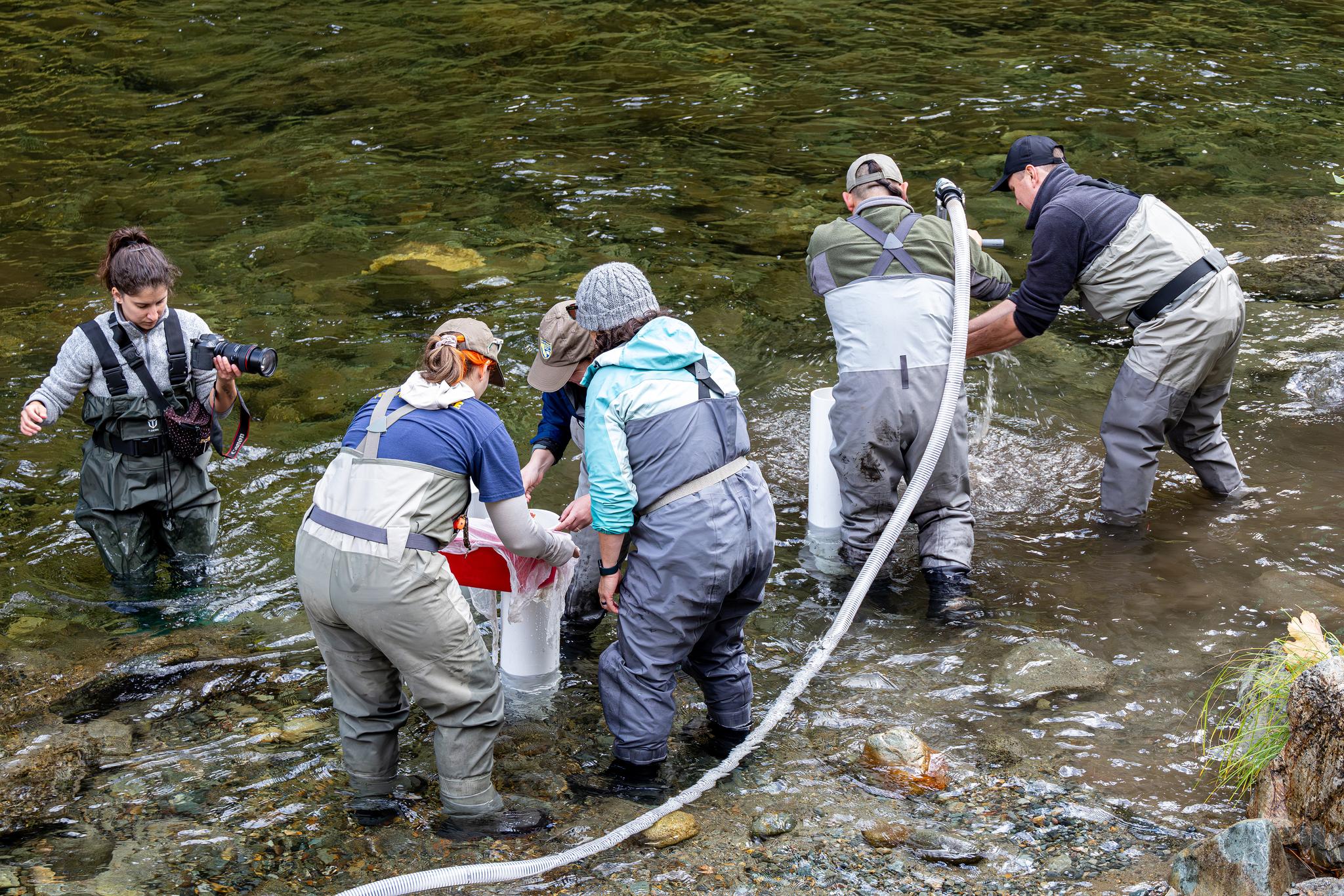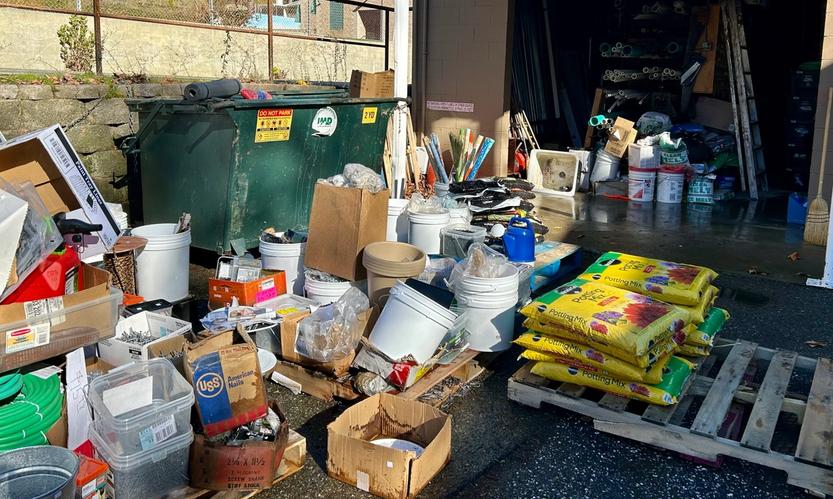CDFW Expands Yuba River Salmon Study in Second Year
October 27, 2025

Salmon eggs are planted in the North Yuba River near Downieville in 2024. Photo courtesy of CDFW.
NORTH YUBA — Last year, the California Department of Fish and Wildlife (CDFW) planted 300,000 spring-run Chinook salmon eggs in the North Yuba River, several of which hatched successfully. The hatchlings led to the capture of juvenile salmon in a rotary screw trap (RST) installed at the Rocky Rest campground. The juveniles from the planted eggs were the first salmon to swim in the North Yuba River since the construction of the Englebright Dam in 1941. After being captured, the juveniles are tagged and transported below the Englebright Dam, where the fish can continue on to the Pacific Ocean. The juveniles are expected to return to spawn in three to five years.
Building on the success from the prior year, CDFW recently planted 42 adult spring-run Chinook salmon from the Feather River Hatchery in Oroville into the North Yuba River above Bullards Bar. One of those salmon was caught by an angler near Rocky Rest campground earlier this month. According to the CDFW, the planting represents the first time in California that adult spring-run Chinook salmon have been reintroduced above a rim dam. CDFW expects the planted salmon to attempt to spawn naturally in the river during the fall, allowing the agency to compare survival and rearing outcomes between natural spawning and artificially injected egg spawning.
CDFW has now collected another batch of 350,000 fertilized spring-run Chinook eggs from the Feather River Hatchery, intending to hydraulically inject the eggs into the North Yuba River next month. CDFW Senior Environmental Scientist Michelle Forsha explained that the salmon reintroduction pilot study continues to expand, saying, “Our goal is to evaluate multiple approaches that can help reestablish a self-sustaining population in this watershed.” The study is the result of California Governor Newsom’s Salmon Strategy Plan for a Hotter, Drier Future, and remains a priority of the administration.
Featured Articles

Sierra Hardware Plans Extensive Repairs After Flood Damage →
December 8, 2025
Sierra Hardware faces extensive repairs after Thanksgiving flood damages store flooring and drywall.
Sheriff’s Office Accepts $60,000 Grant for New Search and Rescue Team →
December 2, 2025
Confusion Surrounds Release of the Plumas County Grand Jury’s Report →
December 4, 2025
WCB Considers Grant for Sierra Valley Tribal Land Purchase →
Updated November 22, 2025
Downieville Fire Auxiliary Hosts Annual “Holiday on Main” Event Saturday →
December 2, 2025